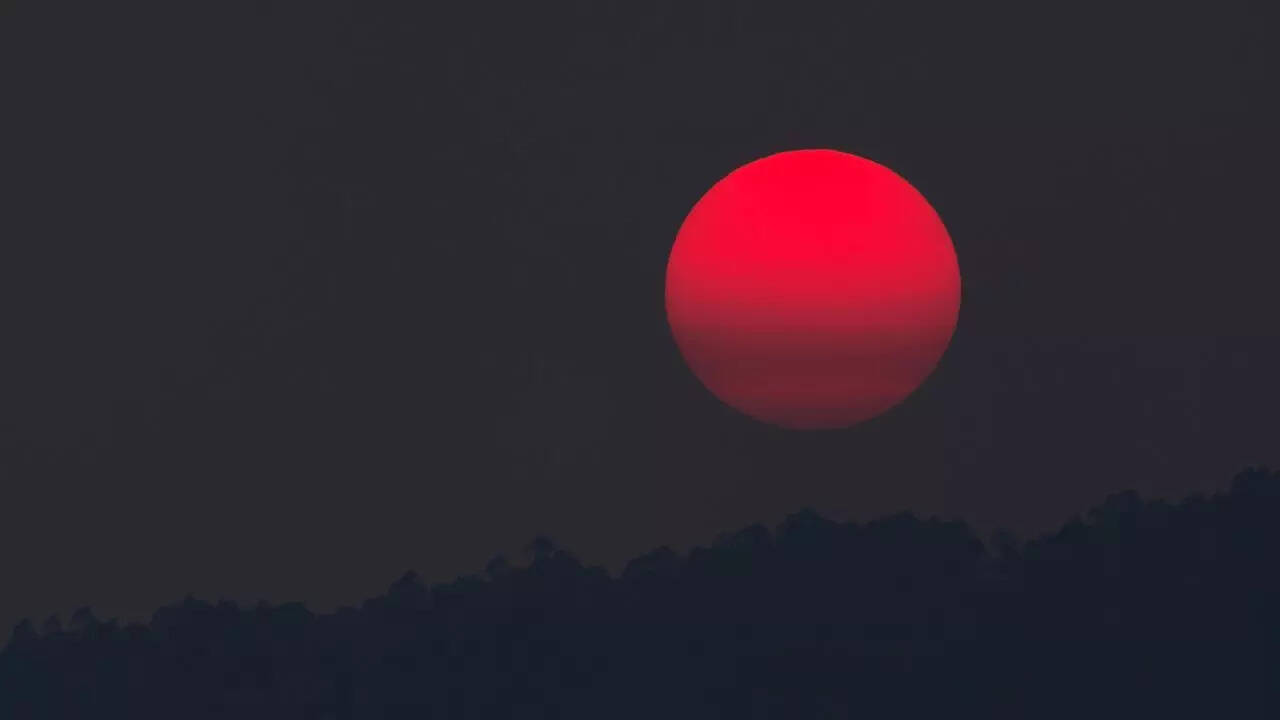Skywatchers are in for a real treat this month. On the night of September 7–8, 2025, a total lunar eclipse will light up the sky— and it’s expected to be a truly amazing sight. What makes this eclipse special isn’t any myths or mysteries, but just its natural beauty. With a long total phase and great visibility across the world, it could be one of the most stunning lunar events we’ve seen in years. Here’s what makes this Blood Moon eclipse so unique:
A striking red Moon – The ‘Blood Moon’ effect
During the eclipse, the Earth will pass directly between the Sun and the Moon, casting its darkest shadow (the umbra) over the Moon. Rather than disappearing into darkness, the Moon will take on a deep red hue, earning it the nickname “Blood Moon.” This glowing red effect isn’t mystical—it’s pure atmospheric science. As sunlight filters through Earth’s atmosphere, it bends and reaches the Moon, casting it in warm tones.
The science behind the red glow – Rayleigh Scattering
So why exactly does the Moon turn red? According to a report by the Times of India, the phenomenon is caused by Rayleigh scattering. As sunlight travels through Earth’s atmosphere, shorter wavelengths like blue and violet scatter in all directions. However, longer wavelengths, such as red and orange, pass through more directly. This filtered light is what illuminates the Moon during the total eclipse, making it appear red, orange, or even copper-coloured.

An exceptionally long total phase
One major feature that sets this eclipse apart is its duration. According to India Today, the total eclipse will last around 82 minutes, making it one of the longest total lunar eclipses in recent years. That’s over an hour of the Moon glowing in rich red shades—plenty of time to take in the full beauty of the event.
A sky show visible to billions
Another factor making this eclipse extraordinary is how many people can witness it. As reported by NASA, the event will be visible across Asia, Australia, Africa, and Europe, offering a rare opportunity for a large portion of the world’s population to catch at least part of the eclipse. This widespread visibility makes it a truly global visual event.
No mysticism- Just beautiful physics
Despite the dramatic look of the Blood Moon, there’s nothing mystical or supernatural about it. The effect is purely due to Earth’s atmosphere filtering sunlight, the same way it creates red and orange hues at sunset. As Time and Date points out, what makes this event special is not hidden meanings, but the sheer natural beauty of the eclipse and its rare visibility conditions.

So, when can you see the eclipse?
Now that we understand why this lunar eclipse is so extraordinary, the next big question is: what time can you see it from your part of the world? Since the eclipse will be visible across multiple continents, the timing will vary depending on your location. Here’s a breakdown of when the different phases of the eclipse — including the start, totality, and end — will occur in various regions around the world.According to Time and Date, and as quoted by Space(dot)com, here are the timings and places:London (BST): 7:30 p.m. – 7:52 p.m. (Sept. 7) — moon rises already in eclipseParis (CEST): 7:30 p.m. – 8:52 p.m. (Sept. 7) — visible low on the horizonCape Town (SAST): 7:30 p.m. – 8:52 p.m. (Sept. 7)Istanbul/Cairo/Nairobi (EEST/EAT):8:30 p.m. – 9:52 p.m. (Sept. 7)Tehran (IRST): 9:00 p.m. – 10:22 p.m. (Sept. 7)Mumbai (IST): 11:00 p.m. (Sept. 7) – 12:22 a.m. (Sept. 8)Bangkok (ICT): 12:30 a.m. – 1:52 a.m. (Sept. 8)Beijing (CST): 1:30 a.m. – 2:52 a.m. (Sept. 8)

Hong Kong (HKT): 1:30 a.m. – 2:52 a.m. (Sept. 8)Perth (AWST): 1:30 a.m. – 2:52 a.m. (Sept. 8)Tokyo (JST): 2:30 a.m. – 3:52 a.m. (Sept. 8)Sydney (AEST): 3:30 a.m. – 4:52 a.m. (Sept. 8)This Blood Moon eclipse on September 7–8 will be a beautiful sight for people around the world. With its red color and long total phase, it’s a great chance to enjoy a special moment in the night sky. Just check the time for your area, step outside, and take a look! Whether you’re an astronomy enthusiast or just someone who enjoys looking up at the night sky, this eclipse is worth setting aside time for. Events like these remind us of the beauty of nature’s cycles—no myths, no mysteries, just science creating a spectacle. On September 7–8, all you need to do is step outside, look up, and witness one of the most breathtaking sky shows of the year.Images: Canva (for representative purposes only)










